How To Make Jello Easter Eggs With DIY Eggshell Molds
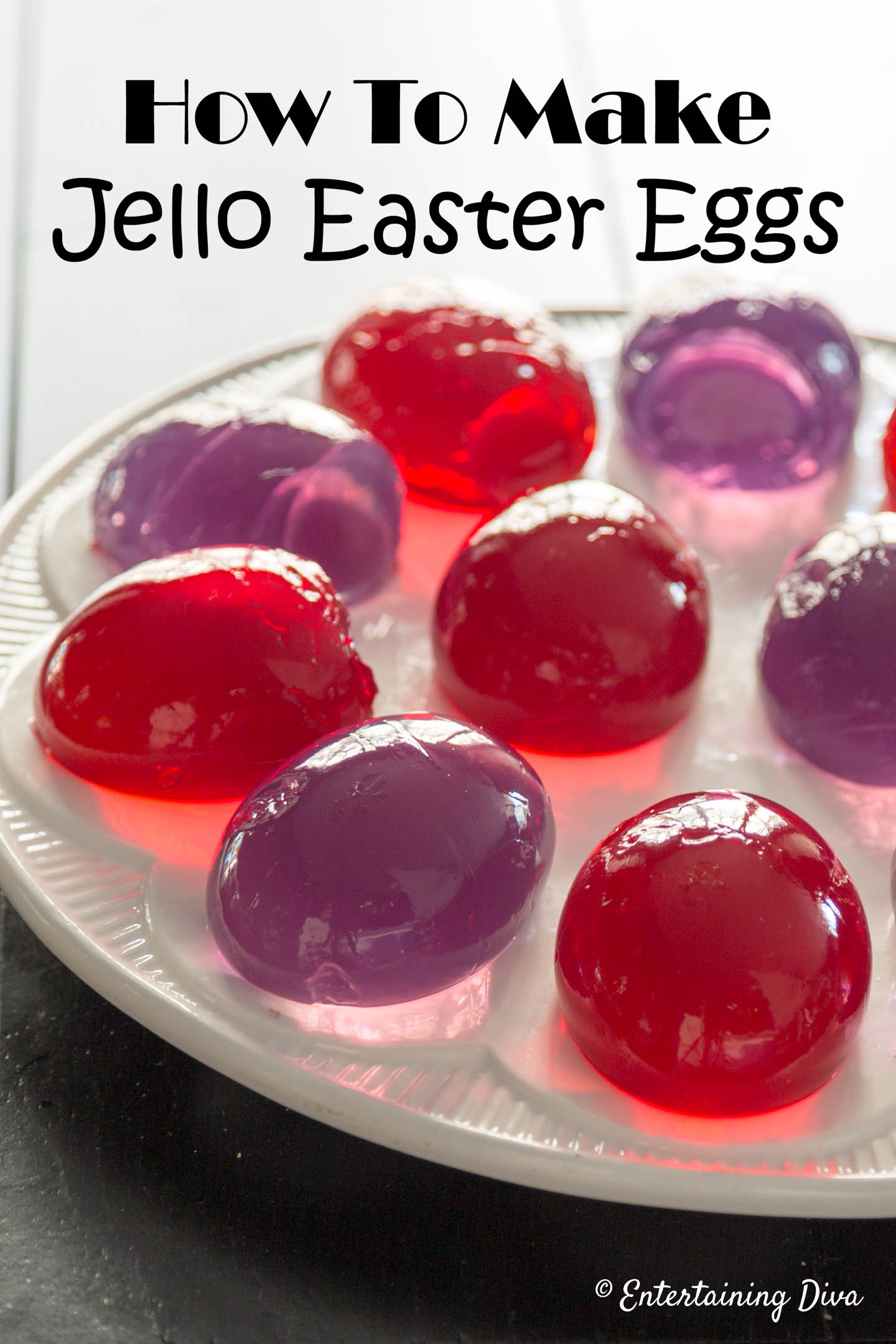
In this recipe
These Jello Easter eggs look really pretty on the table, so they serve double duty. Easter dessert that also works as decor.
I don’t own a Jello egg mold so I made my own DIY version using the eggshells from real eggs.
They’re free.
And you can peel the shells right off so the Jello is less likely to break than if you’re using a plastic mold.
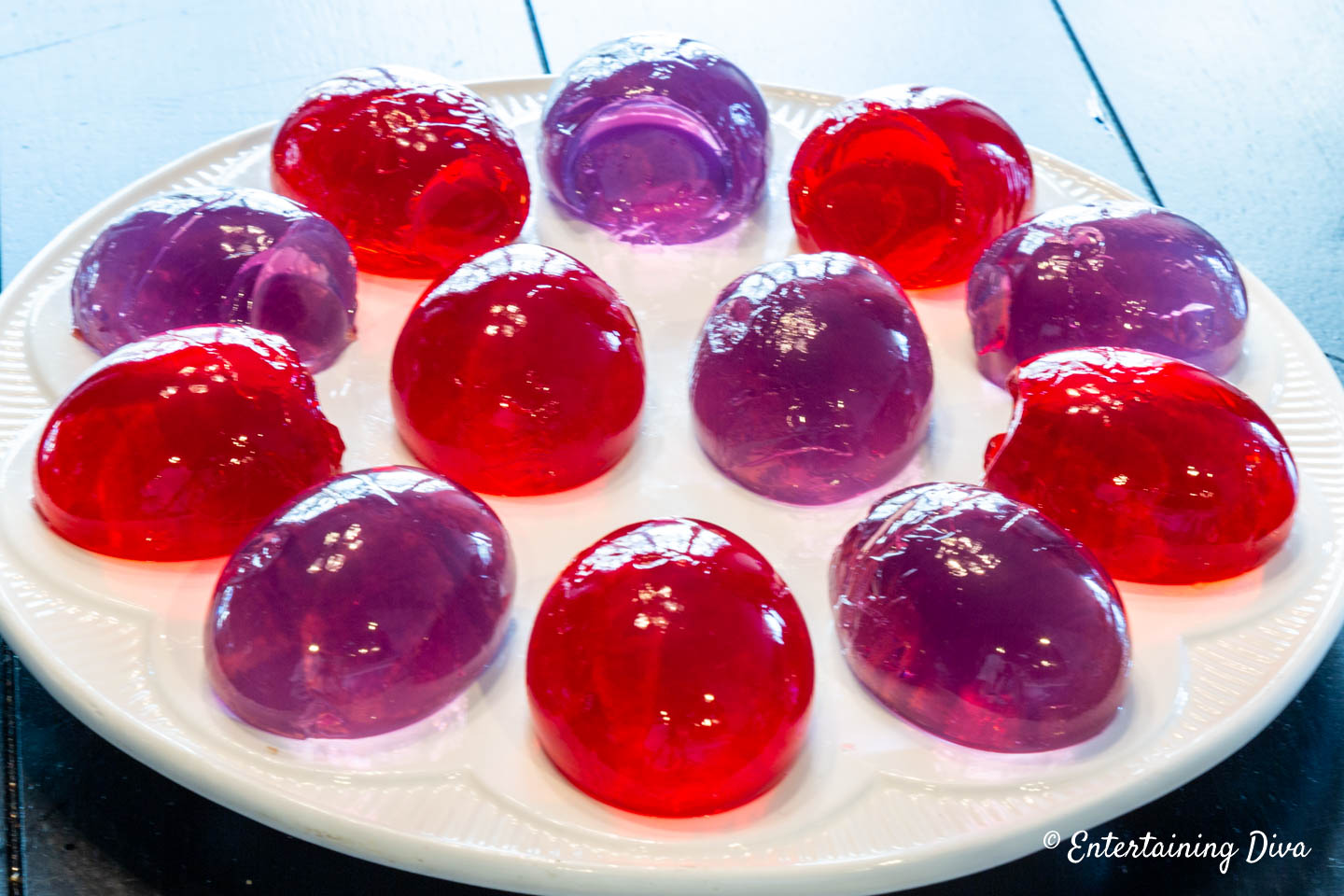
Ingredients
To make 6 jello Easter eggs, you’ll need:
- 3-ounce (small) package of jello in the color you want. I usually like to do more than one color (so I make the recipe more than once).
- 6 eggs – we’ll be using the eggshells for the Easter egg molds. You can use the leftover eggs for your other recipes (like my favorite carrot cake).
For ease of cleanup, look for eggs that come in a plastic container rather than a styrofoam one. We’ll be using it to keep the eggshells upright while we pour in the Jello. And the styrofoam ones leak if you accidentally spill some of it (which I always do). As you’ll see from the pictures, I learned this the hard way 🙂
How to make the eggshell molds
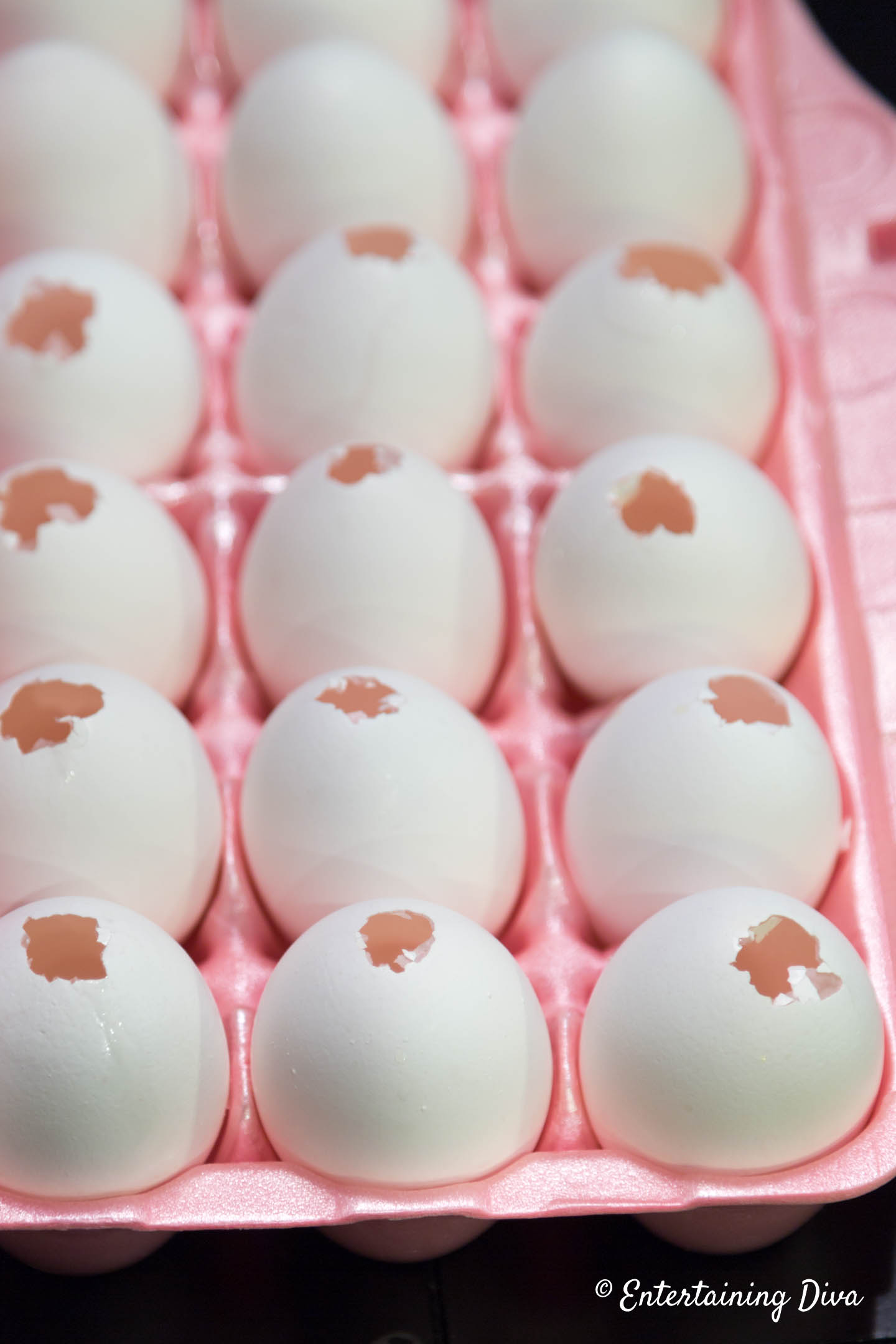
The first step to making your own jello egg molds is to remove the egg whites and yolks from their shells without breaking the shells.
1 | Make a hole in the shell
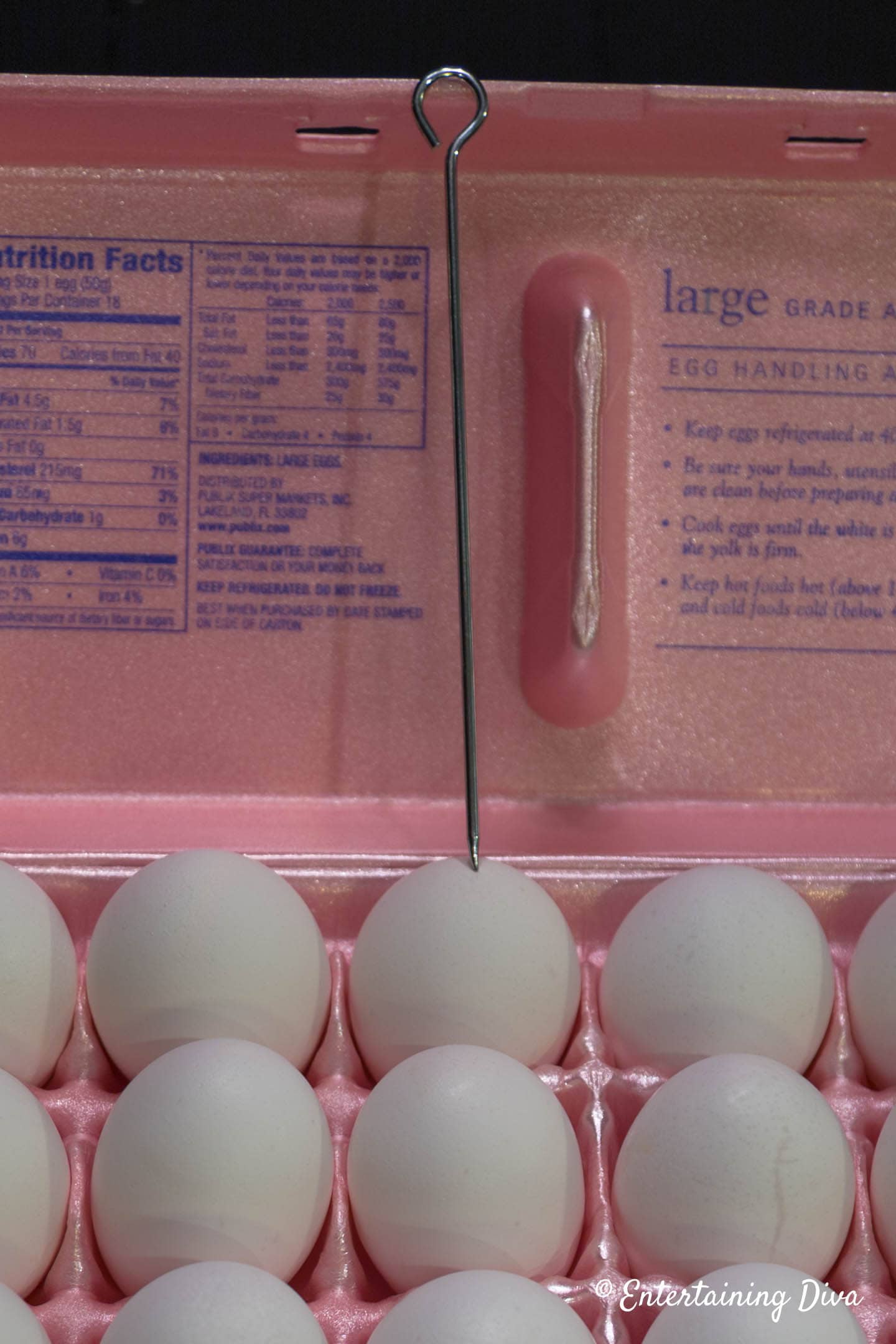
Start by breaking a hole in the small end of the egg using the sharp end of a metal skewer.
Then use the skewer to break the yolk. This will make it easier to get the contents of the egg out of the shell.
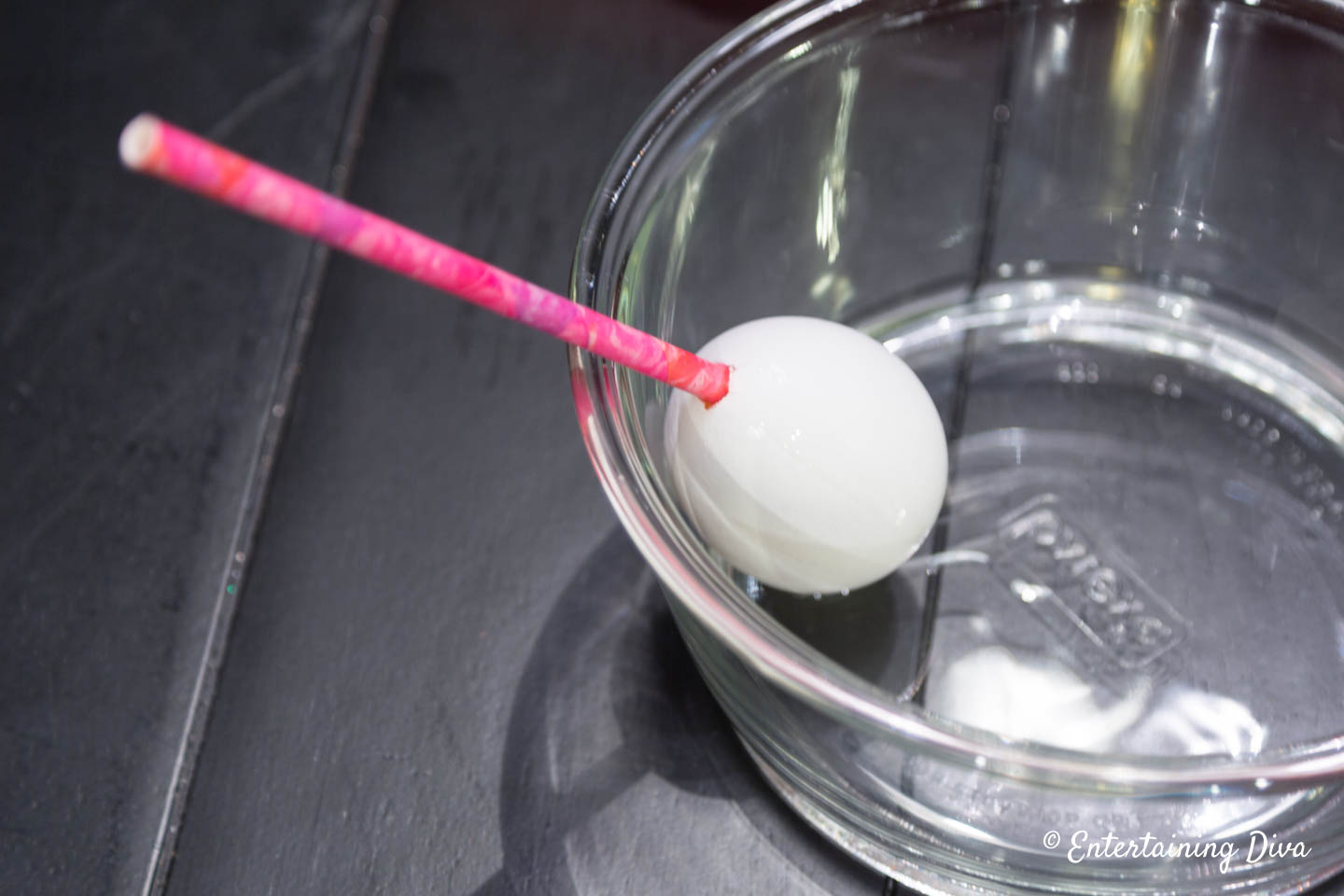
The hole needs to be big enough that the straw will fit in and have a little extra space around it. And you will really make your life easier if the end of the funnel can fit in it also (less mess when pouring the jello in later on).
The hole that I made in the picture above wasn’t big enough. There should be some space around the straw.
2 | Blow out the eggs
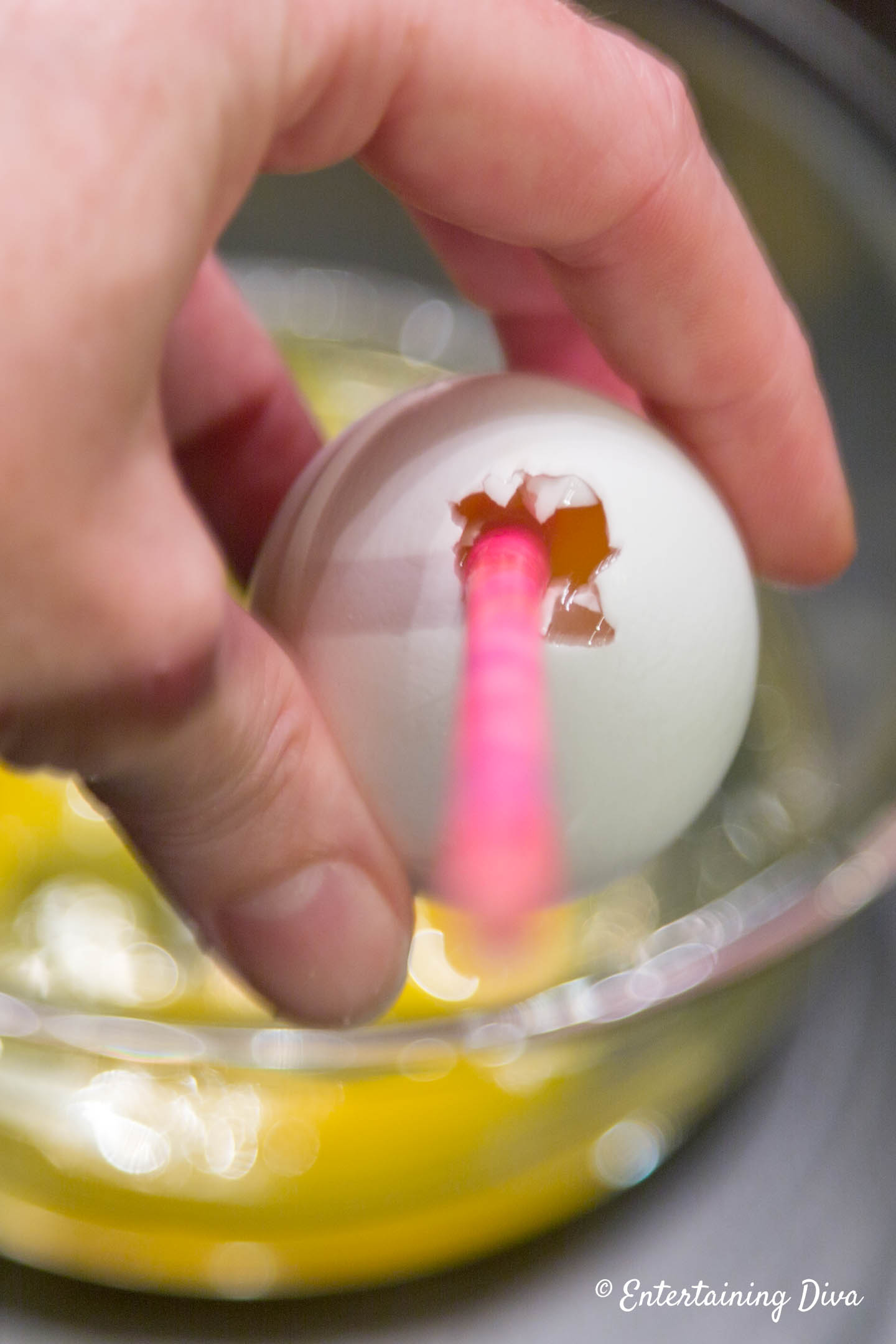
Insert one end of the straw into the hole that you made.
Hold the egg over a bowl and blow into the free end of the straw.
The contents of the egg will come out through the hole in the shell around the straw and fall into the bowl.
Don’t worry, it sounds like this would be hard to do. But it isn’t.
To make the leftover eggs easier to reuse, I often use more than one bowl to store them in. I decide ahead of time what other recipes I’m going to make so I know how many eggs I need for each. Then get out one bowl per recipe and blow the correct number of eggs into it.
3 | Rinse and repeat
Rinse the inside of the eggshell with water to remove any egg that remains inside.
Let it drain, hole side down, in the egg carton.
Repeat this process for as many Easter eggs as you want to make.
How to make Jello Easter eggs
1 | Make The Jello
To make the jello, we’re going to use a little less water than usual. That will keep the jello mold firm and make sure it keeps its Easter egg shape.
First put some water on to boil in a kettle or pot.
Add the Jello crystals to a bowl.
Then pour 1 cup of the boiling water into the bowl and stir until the gelatin crystals have dissolved completely.
Then add ½ cup of cold water to the jello (instead of the usual 1 cup).
If you really want to make sure the Jello stays firm, you can skip the cold water step altogether. But I find that makes the eggs really stiff and some people don’t like eating it very much. You’ll also get a lot fewer eggs out of 1 box of Jello.
2 | Fill the molds
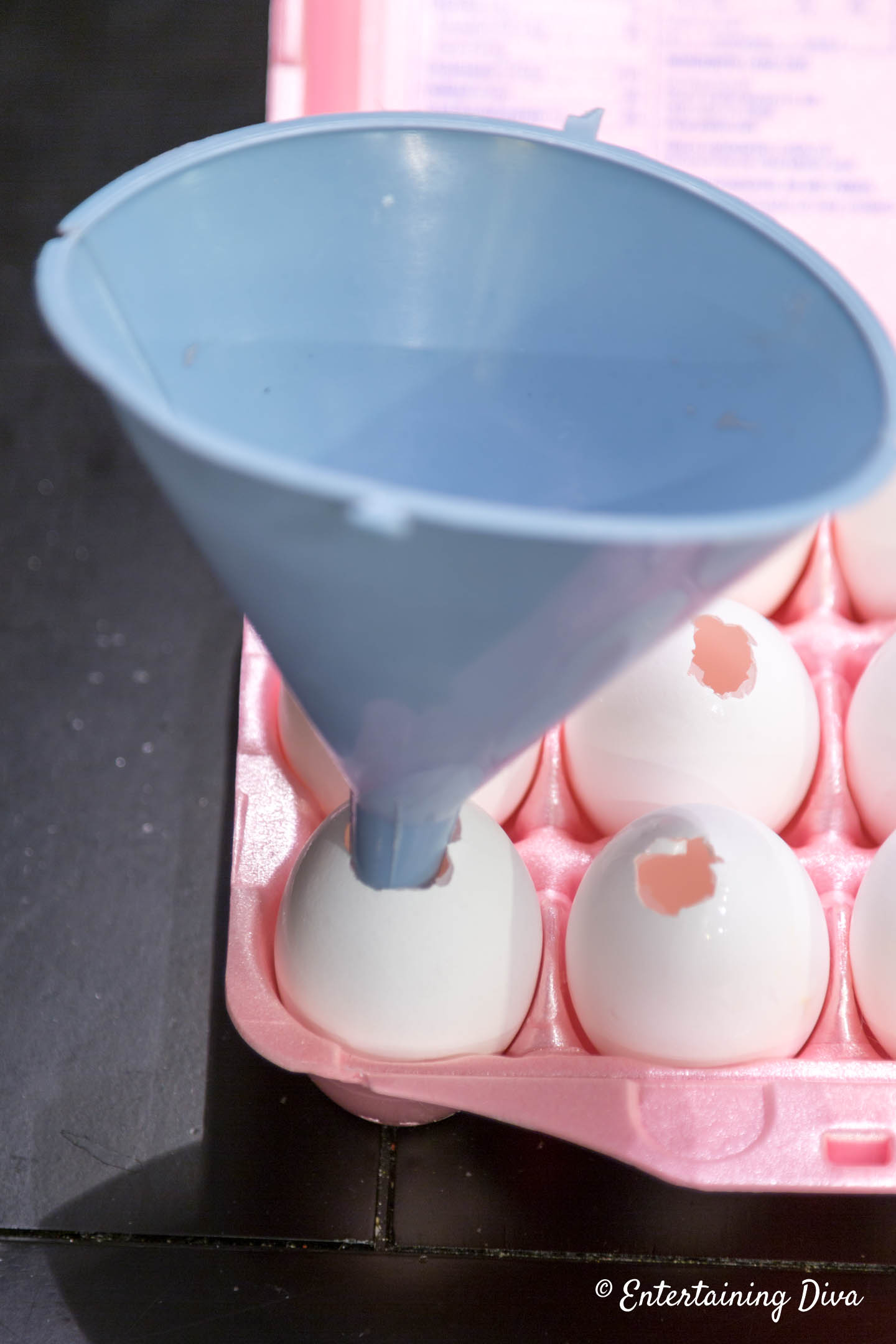
Now fill the egg shells with the jello mixture.
Turn the eggs over in the carton so that the hole is facing upward.
Put the funnel in the hole.
Then slowly pour the jello into the funnel. Keep a close watch on how full the egg is getting since they overflow pretty easily.
3 | Chill
Refrigerate the jello eggs for at least 4 hours.
They will keep like this for a few days, so you don’t have to take them out immediately.
How to remove the eggshell mold
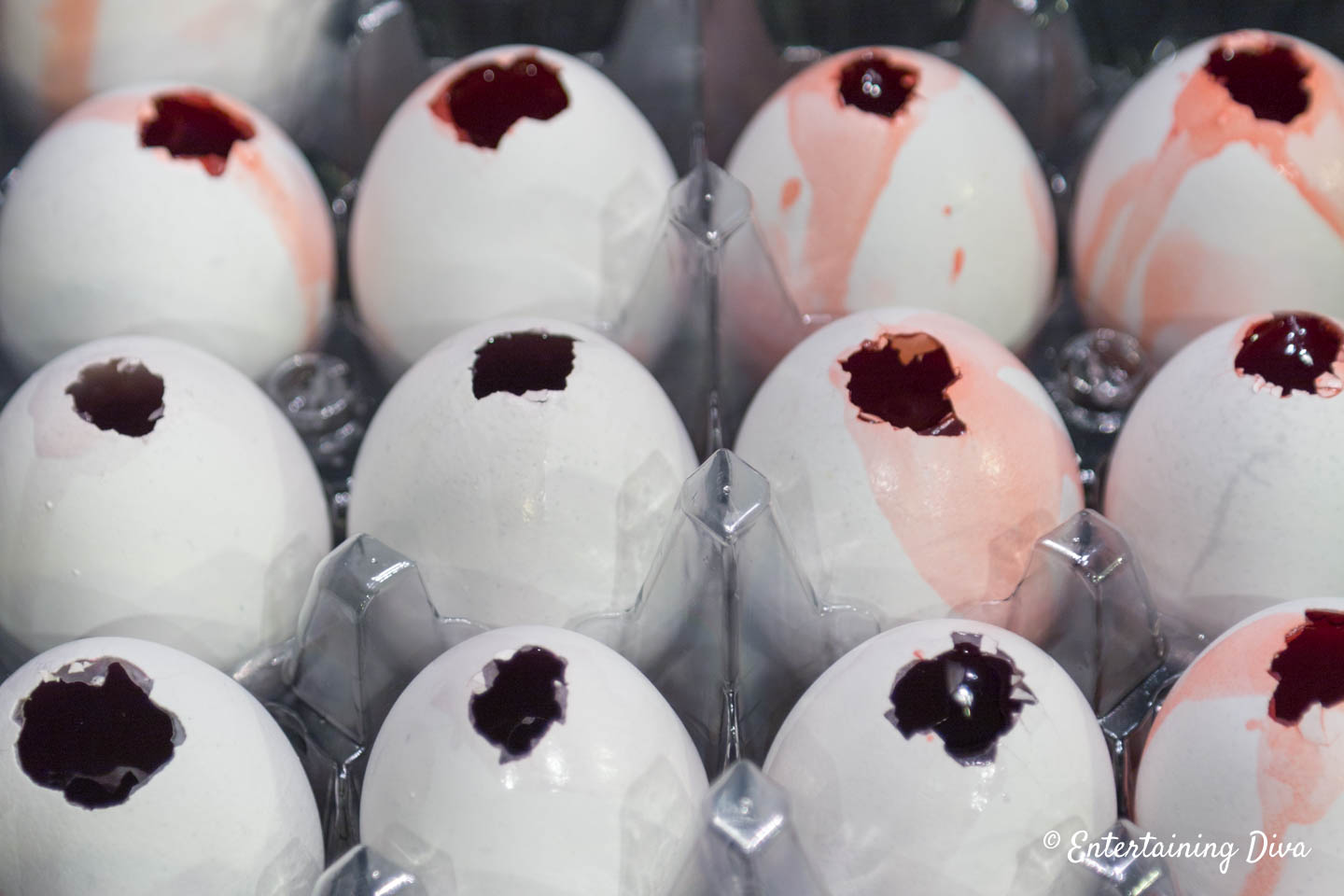
When the jello is chilled, it is time to remove the shells.
The trick with this is to remove the shell and membrane without damaging the Jello (just like when you’re peeling hard-boiled eggs).
1 | Crack the shells
Crack the shells by gently tapping the egg on a hard surface. I usually start at the bottom of the egg and work my way up.
Then run the eggshell mold under hot water for a few seconds. This will melt the jello around the edge of the egg and make it less likely to stick.
2 | Peel the eggshell
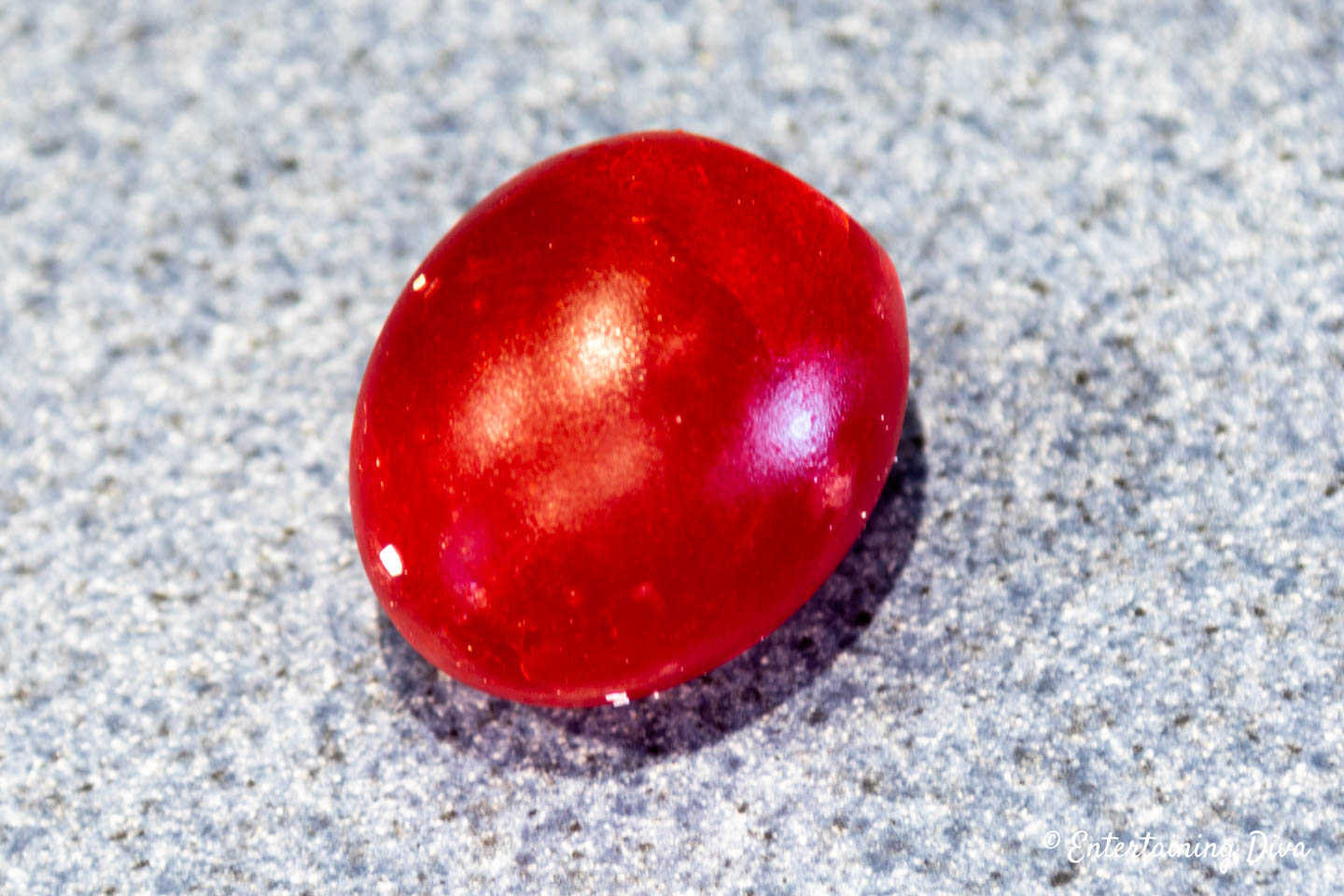
Peel the egg leaving the membrane inside the shell in tact.
This helps to keep the jello from splitting while you’re peeling.
3 | Remove the membrane
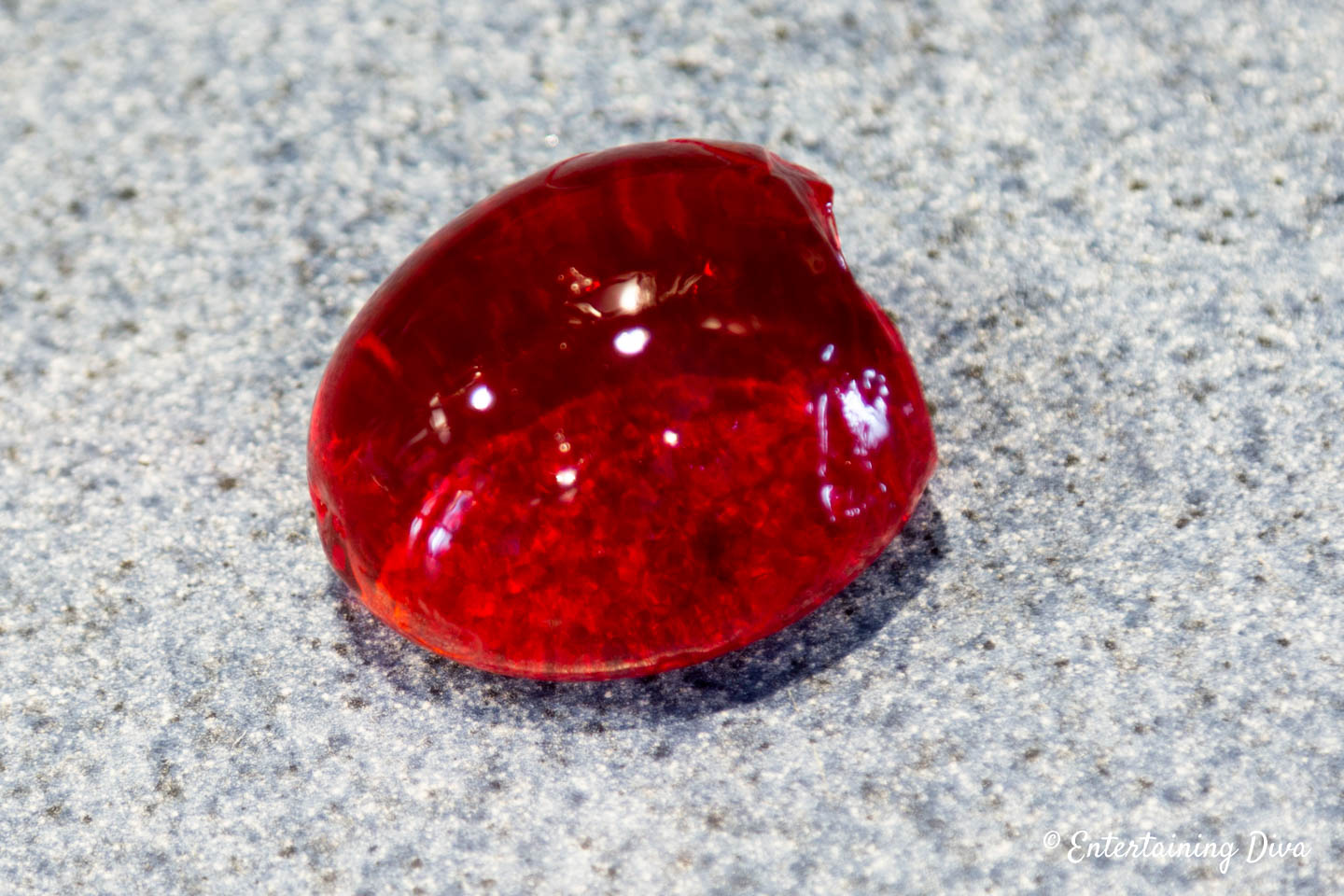
Finally, remove the membrane from the outside of the jello.
If it doesn’t want to come off easily, run the egg under hot water again for a couple of seconds and it should peel right off.
Storage
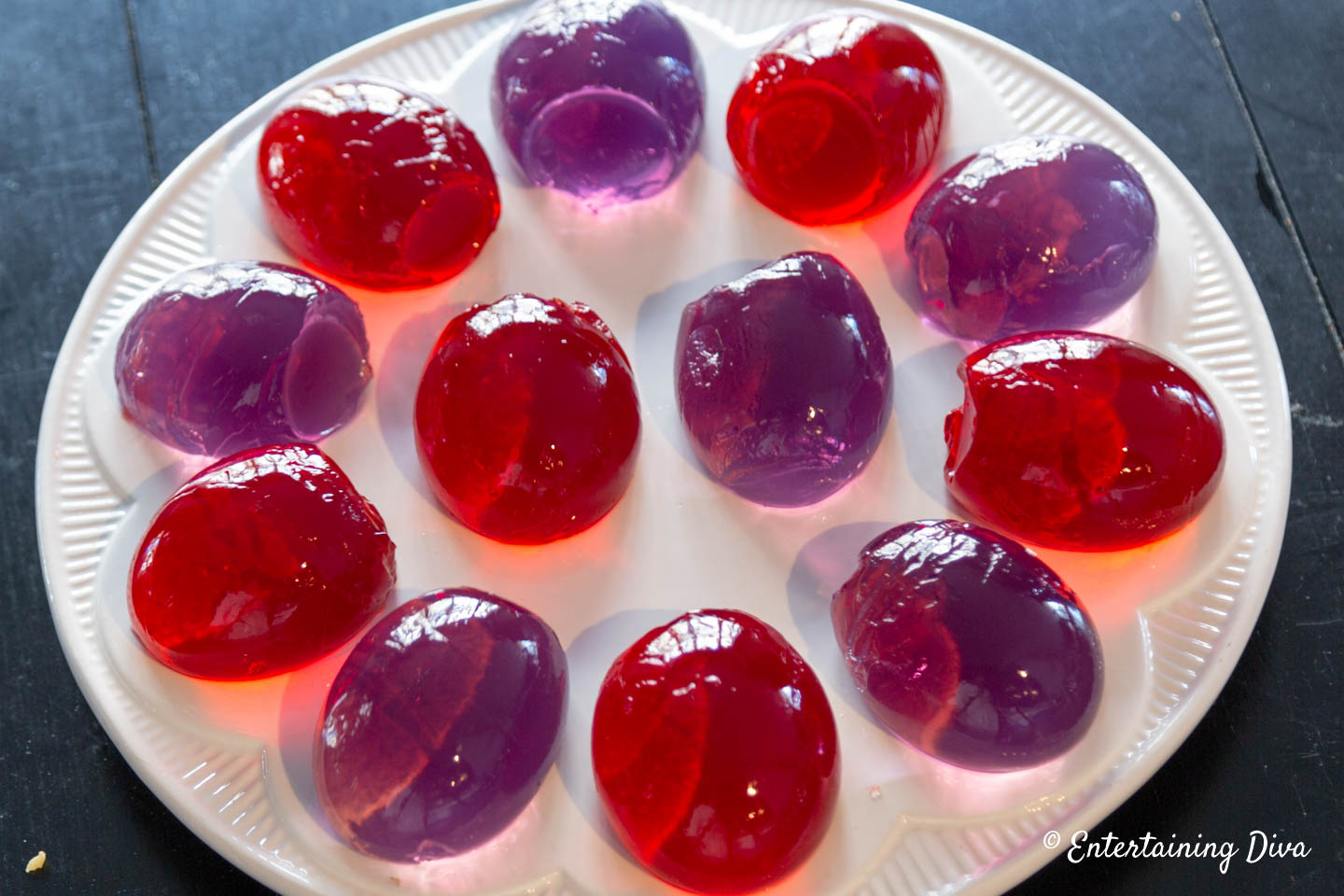
If you have a deviled egg plate, it makes a great place to store your eggs while keeping their shape.
Jello Easter eggs can be covered and stored in the refrigerator for a few days, if you aren’t serving them right away.
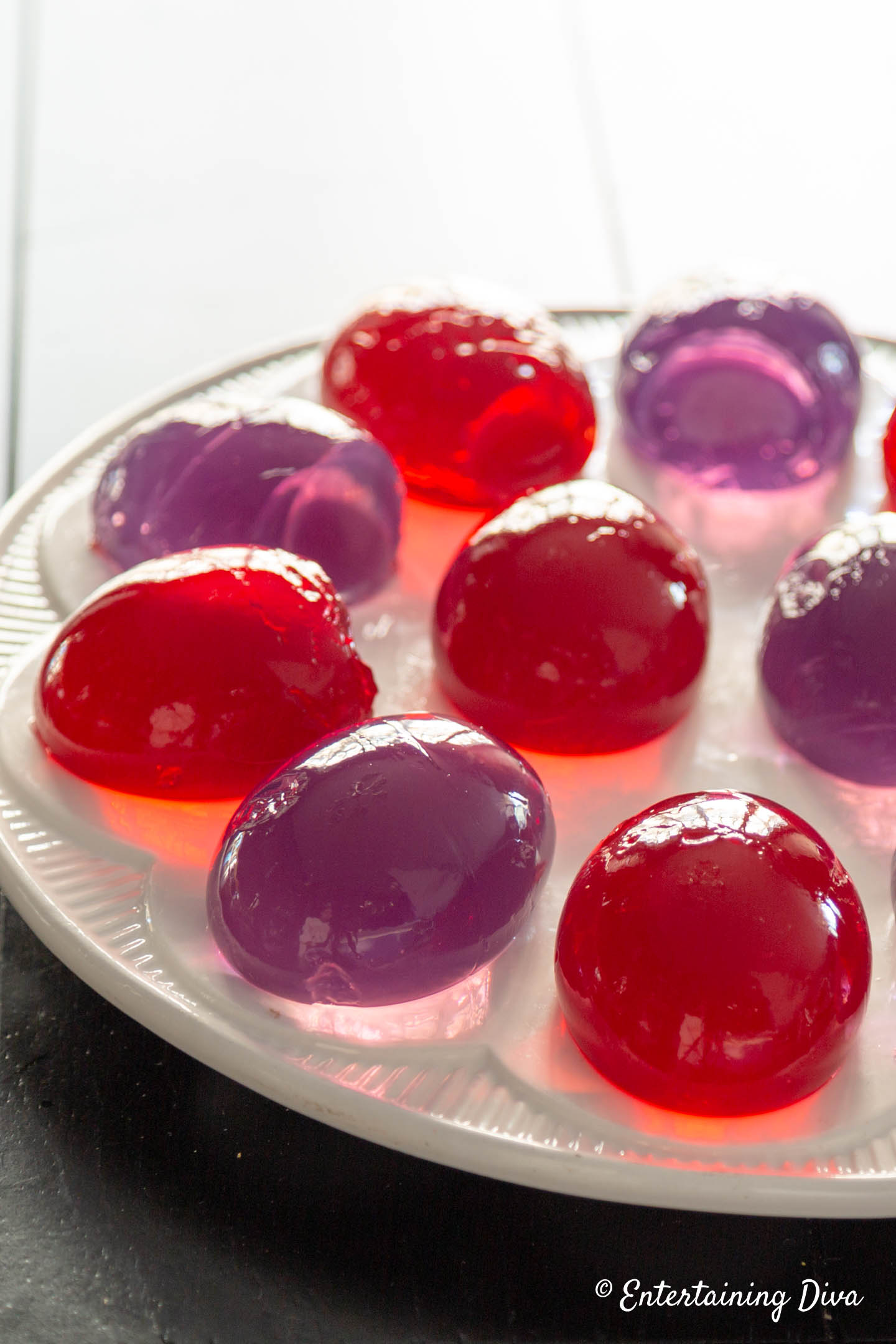
The deviled egg plate works pretty well for serving the Jello Easter Eggs, too!
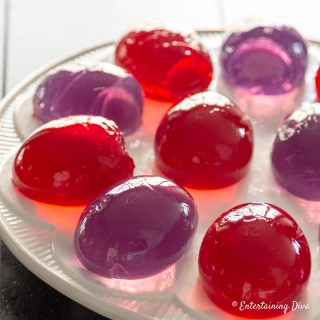
Jello Easter Eggs
Ingredients
- 6 eggs
- 1 cup boiling water
- 1 3-ounce (small) package Jello
- ½ cup cold water
Equipment
- egg carton
- Metal skewer
- straw
- kettle or pot for boiling water
- mixing bowl
- mixing spoon
- funnel
Instructions
How to make Jello egg molds
- Break a hole in the small end of the egg using the sharp end of a metal skewer. The hole needs to be big enough that the end of a funnel will fit into it.
- Use the skewer to break the yolk inside the egg (this just makes it easier to get out).
- Hold the egg over a bowl and insert one end of the straw into the hole that you made.
- Blow into the free end of the straw so that the contents of the egg come out through the hole in the shell around the straw into the bowl.
- Rinse the inside of the egg with water to remove any egg that remains inside.
- Let the eggshell drain, hole side down, in the egg carton.
- Repeat this process for all of the eggs.
Make the Jello Easter eggs
- Mix the contents of one package of jello with the boiling water until the sugar has dissolved.1 cup boiling water, 1 3-ounce (small) package Jello
- Mix in the cold water½ cup cold water
- Use the funnel to slowly pour the jello into the hole in the eggshells. Keep a close watch on how full the egg is getting since they overflow pretty easily.
- Put the jello eggs in the refrigerator and chill for at least 4 hours, or up to 3 days.
Remove the shells
- Crack the shells by gently tapping the egg on a hard surface. I usually start at the bottom of the egg and work my way up.
- Run the egg under hot water for a few seconds to melt the Jello around the edge of the egg.
- Peel the egg leaving the membrane in tact. This helps to keep the jello from splitting while you’re peeling.
- Finally, remove the membrane from the outside of the jello. If it doesn’t want to come off easily, run the egg under hot water again for a couple of seconds and it should peel right off.
Notes
- Use the leftover eggs for your favorite recipe. Saving them in 3 different bowls so that there are 2 eggs in each one makes it easier to use them for separate recipes.
- If you want to make the jello easier to work with, you can eliminate the cold water step from the recipe. This will make the jello a little stiffer, so it will hold the egg shape better, but the texture is a little stiffer than people are generally used to eating.
- Plastic egg cartons work better than styrofoam ones If you have any jello overflow, it often leaks through the styrofoam and you end up with a sticky mess to clean up.
Nutrition values are estimates only, using online calculators. Please verify using your own data.
Have comments or questions about How To Make Jello Easter Eggs With DIY Eggshell Molds? Tell us in the section below.
This post was originally published on March 10, 2016 but was updated with new content on March 22, 2024.

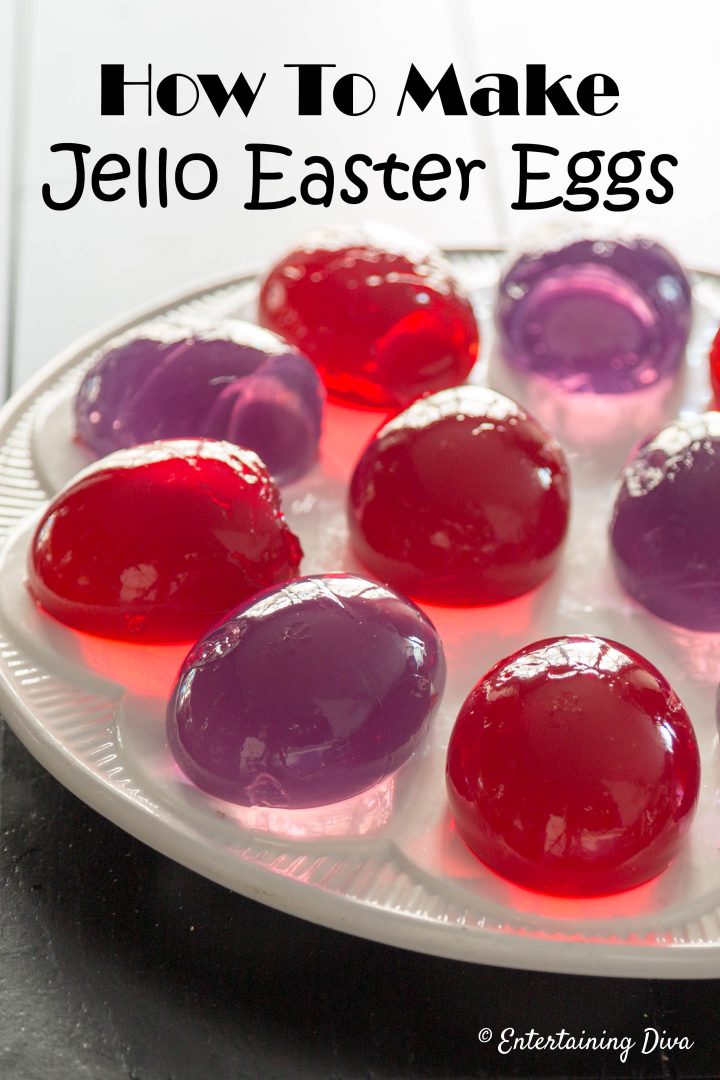
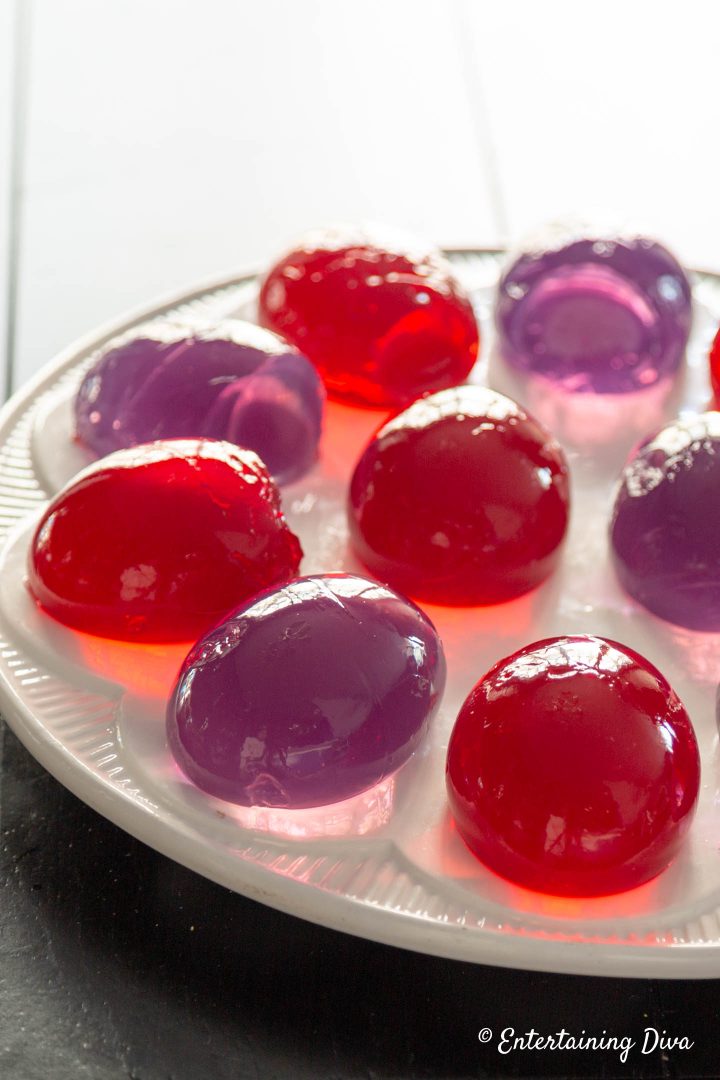
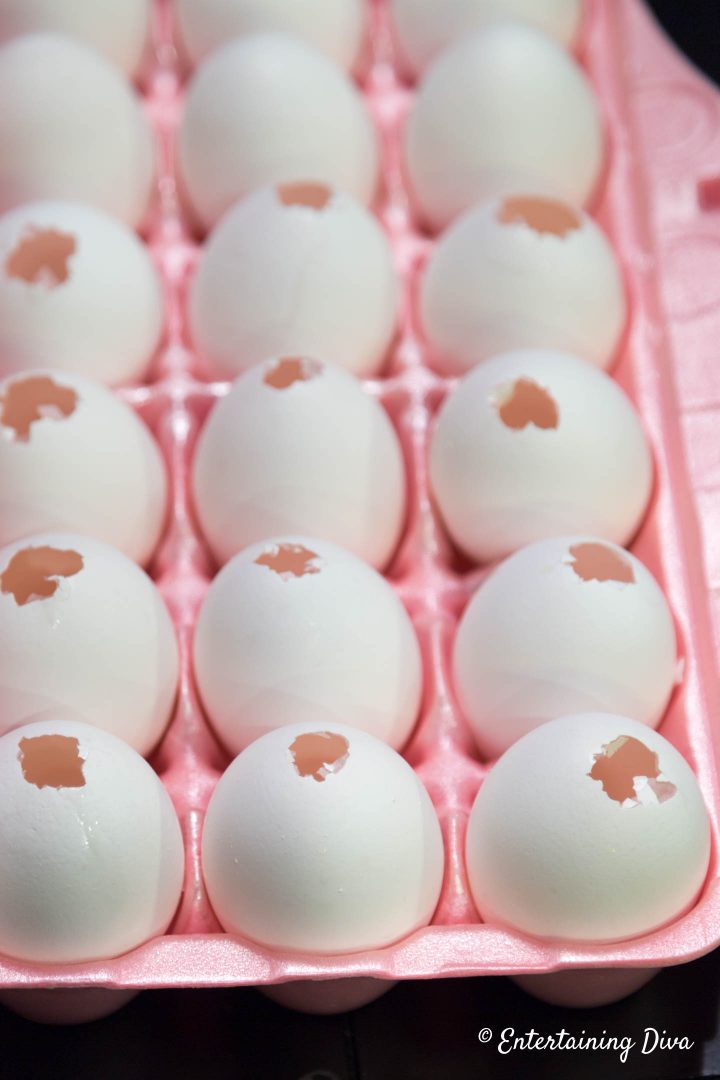
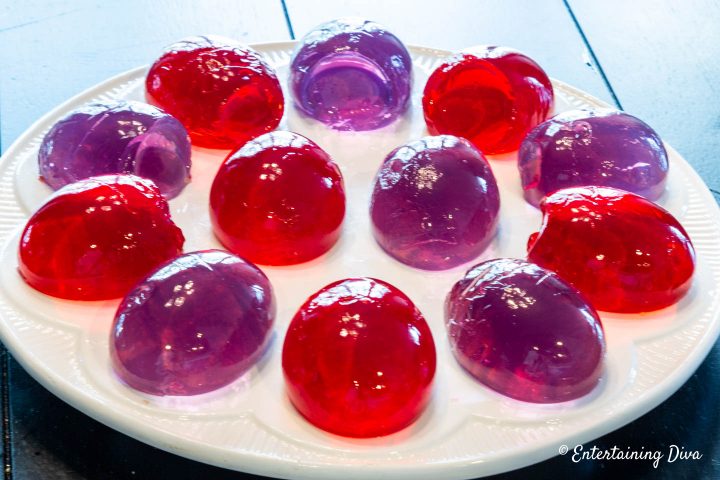
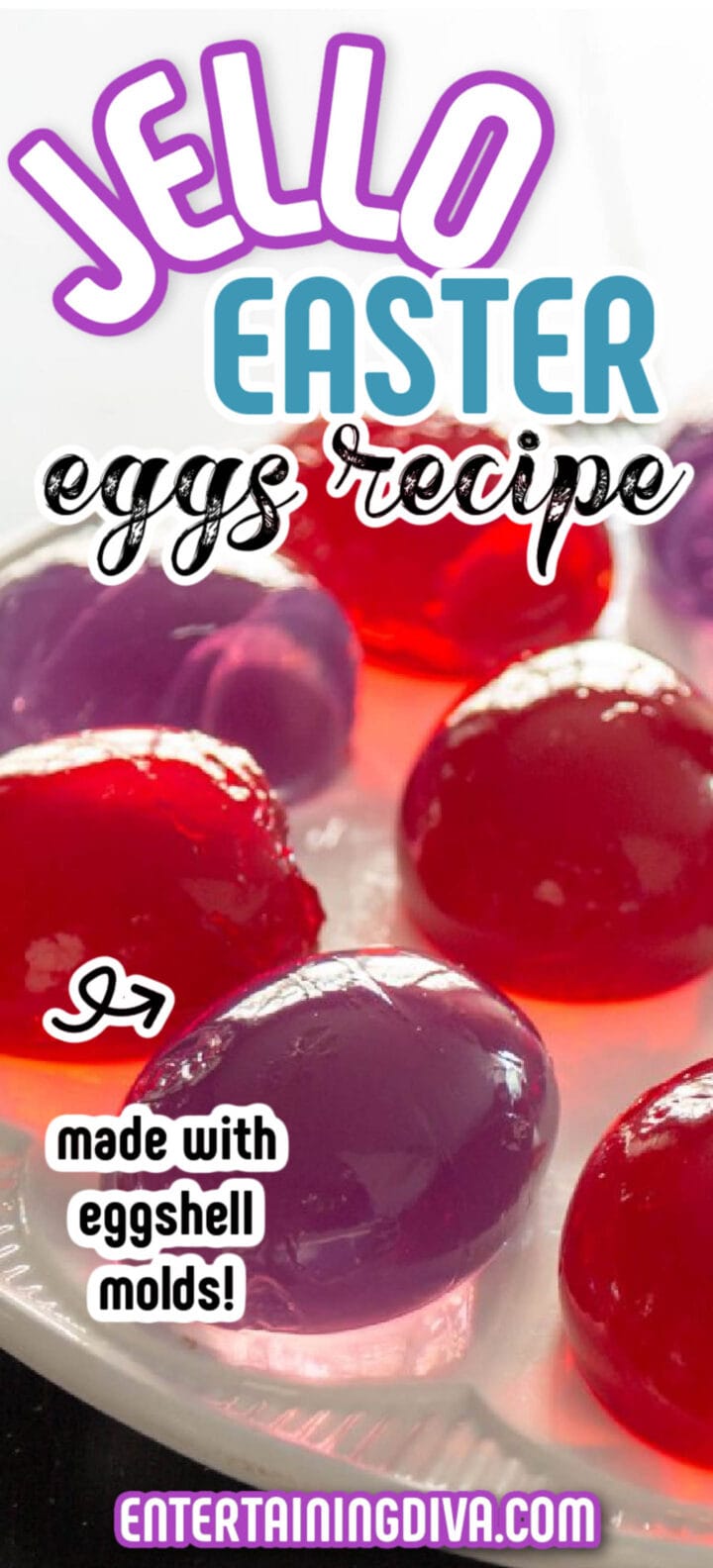
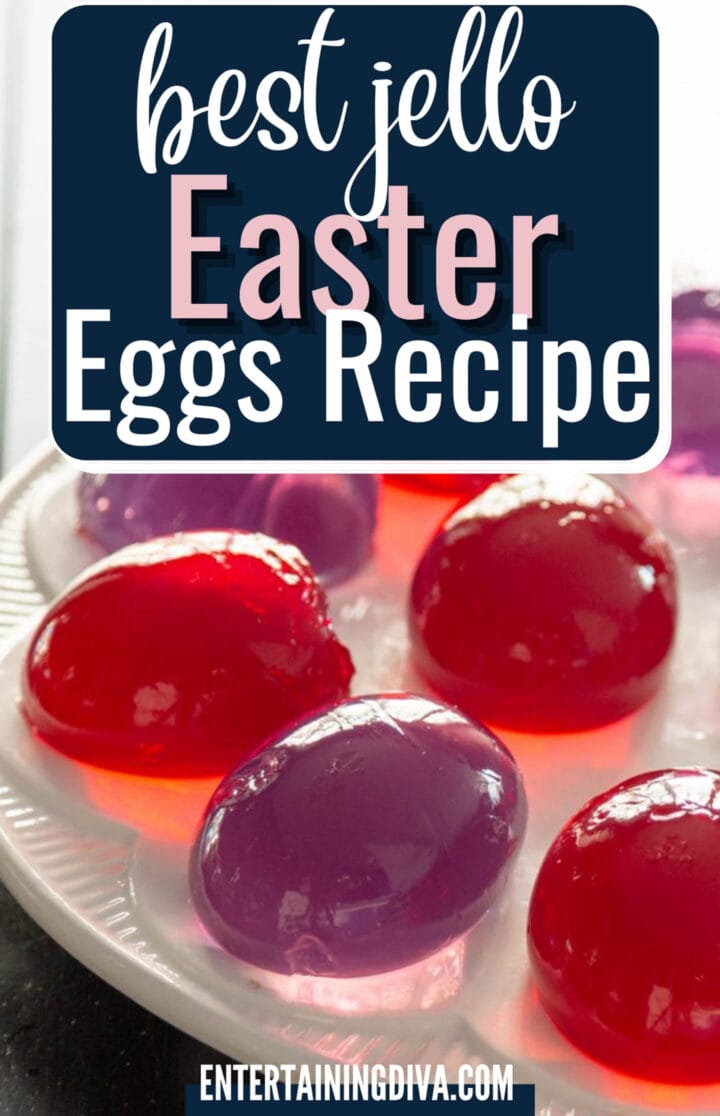
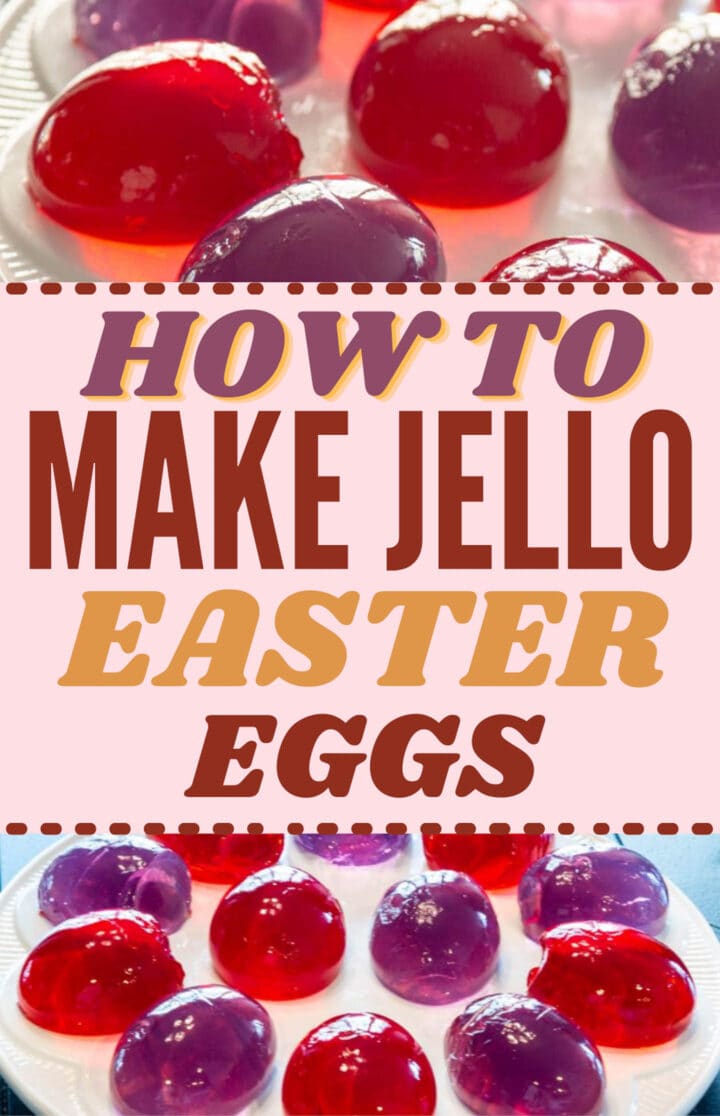
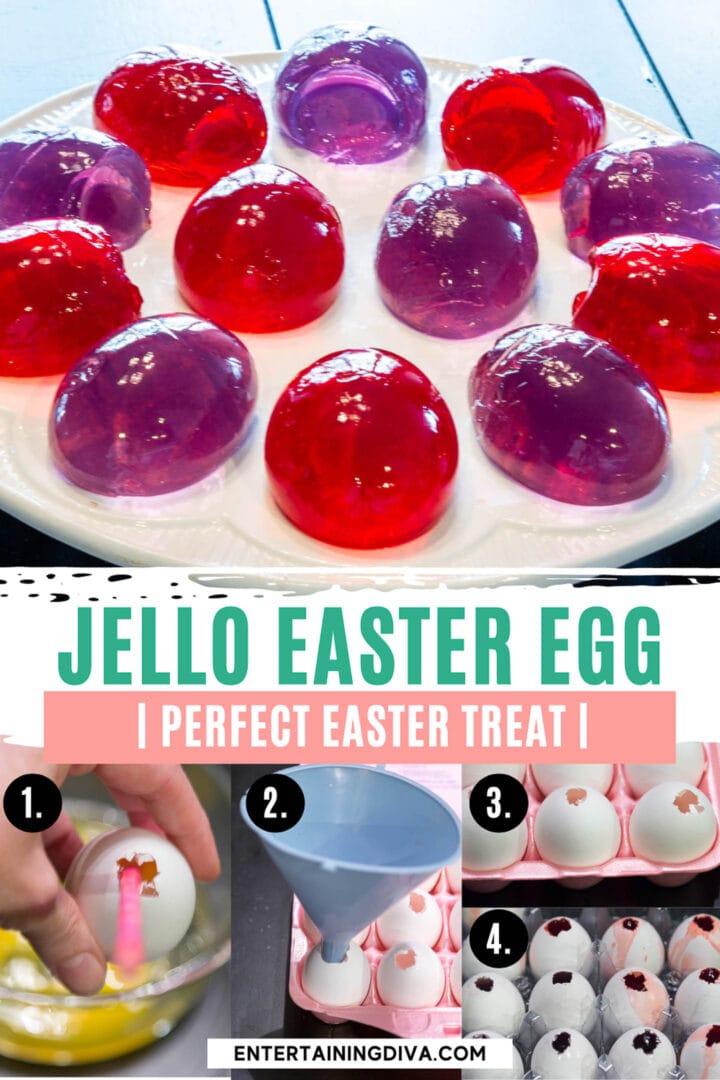
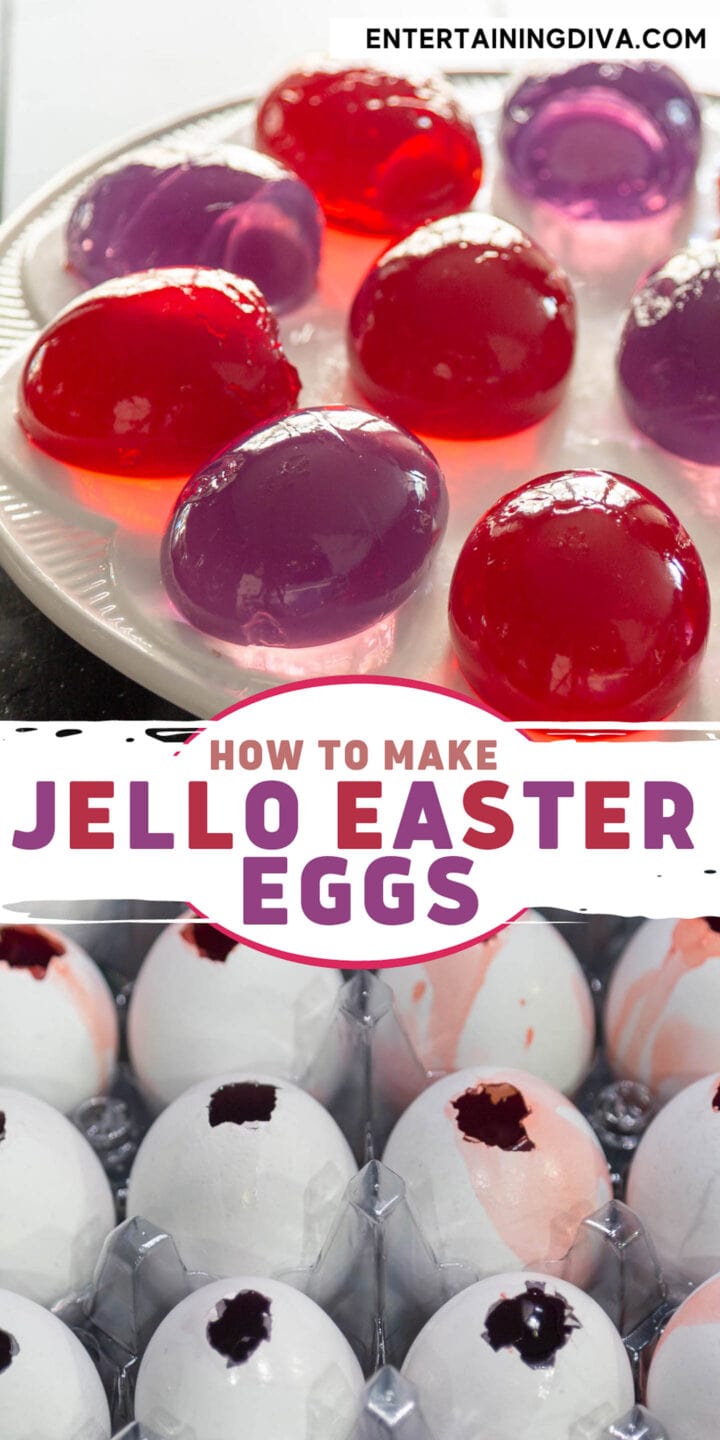
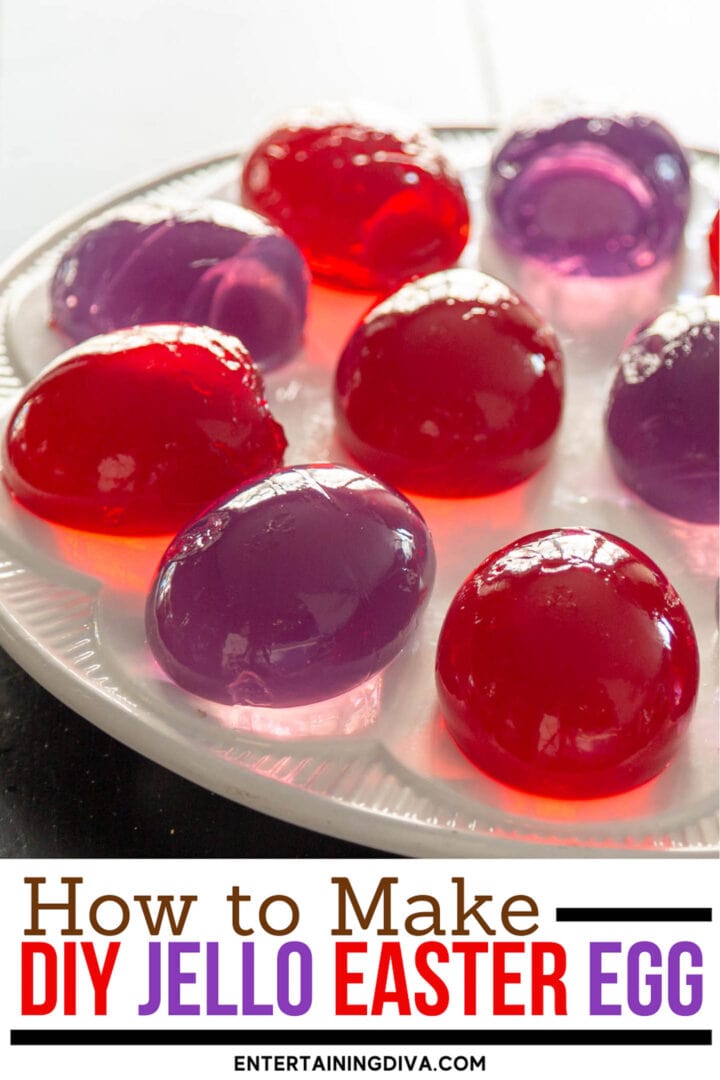
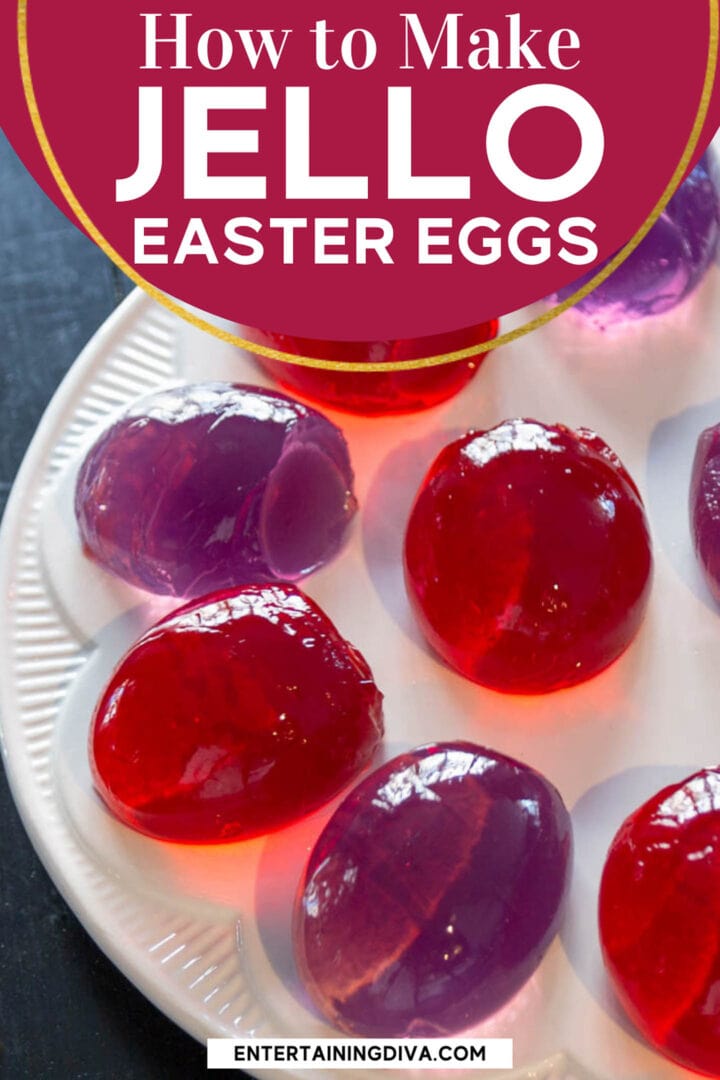
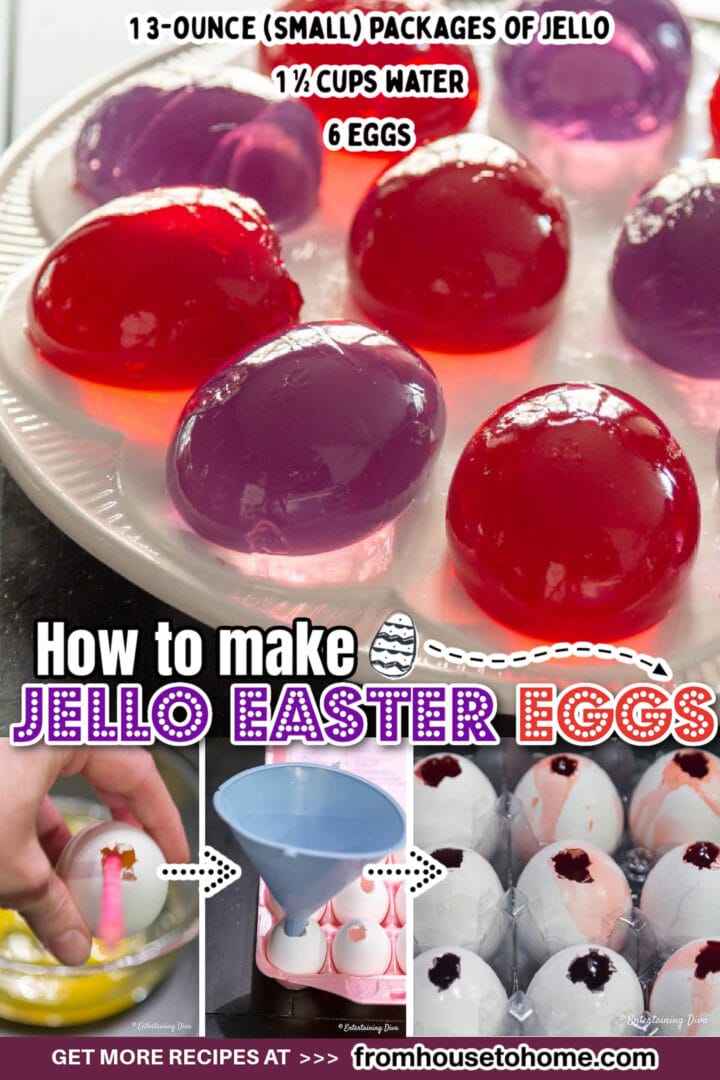

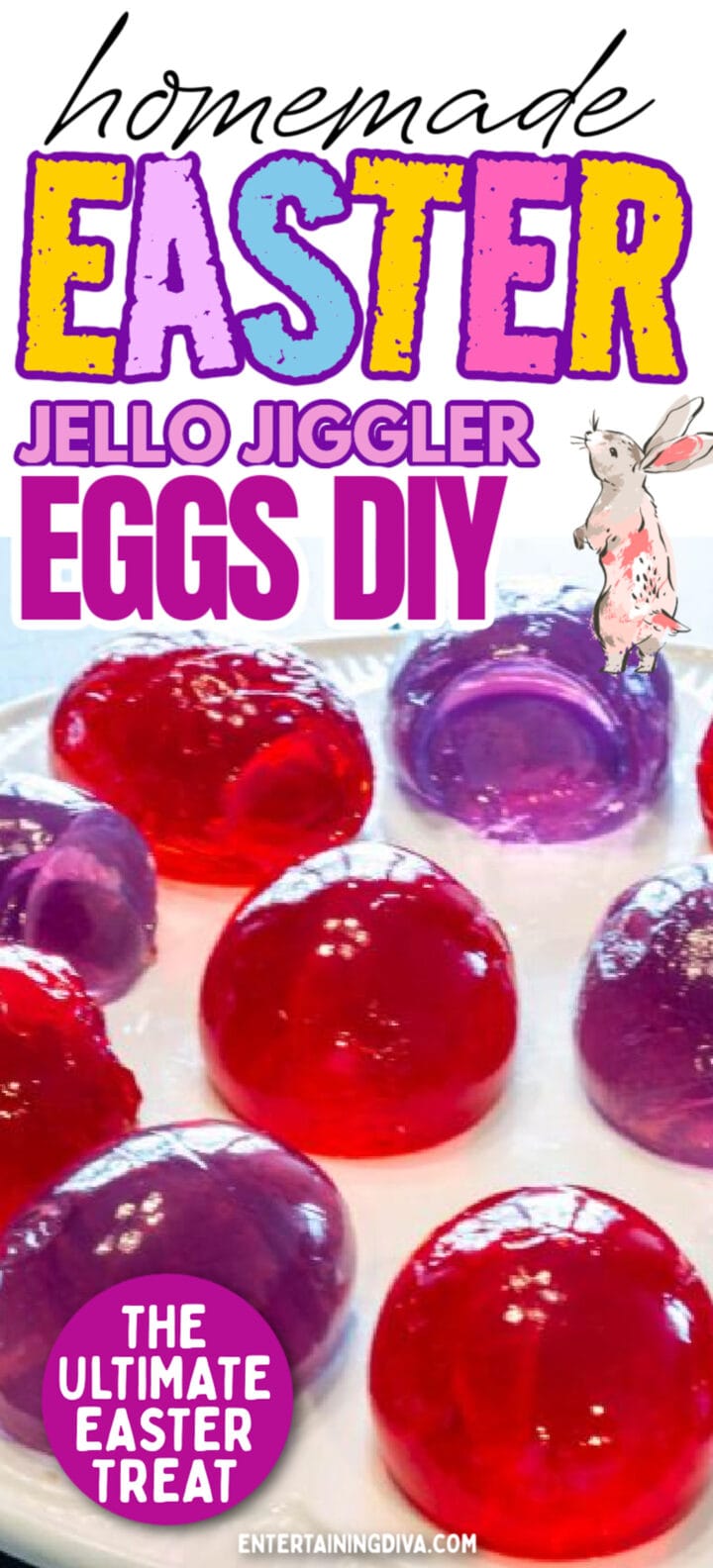
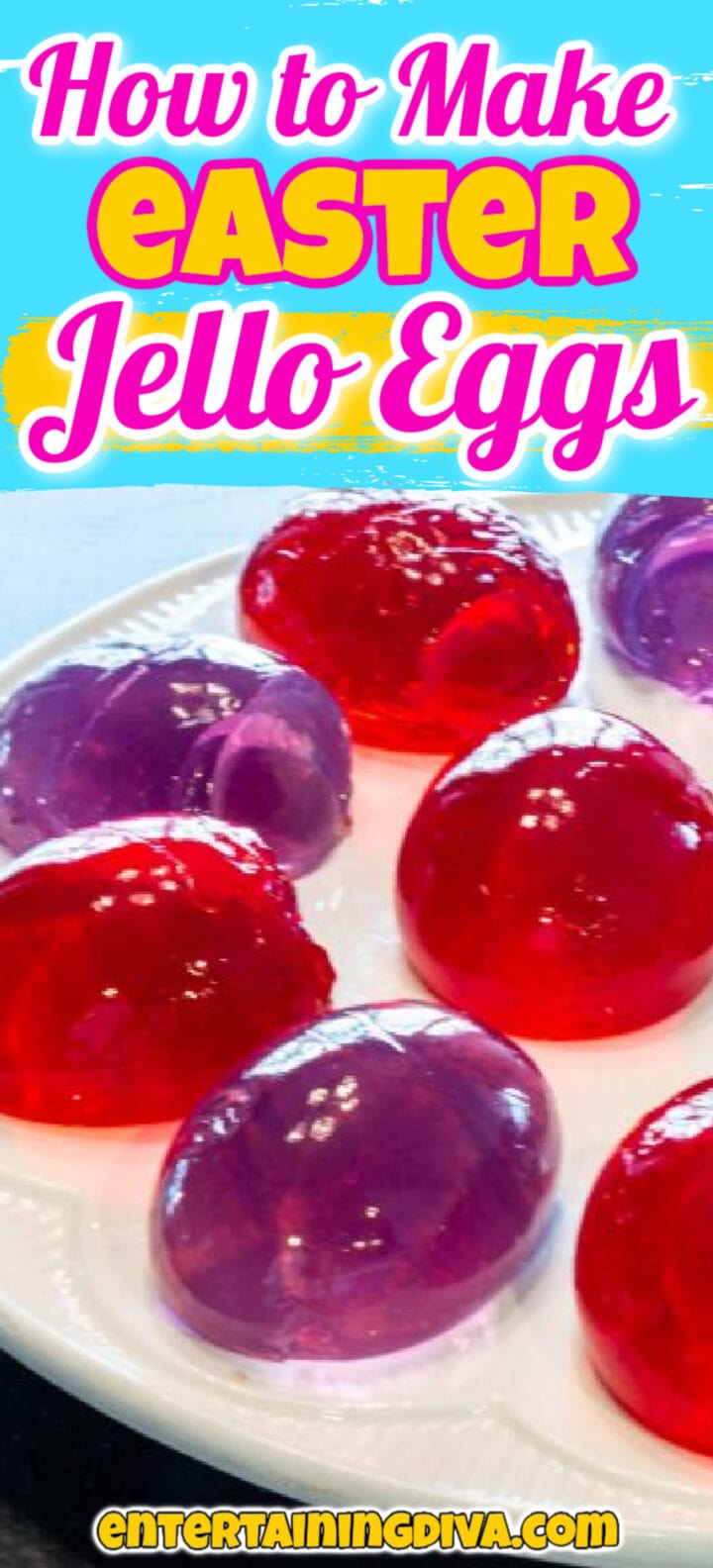



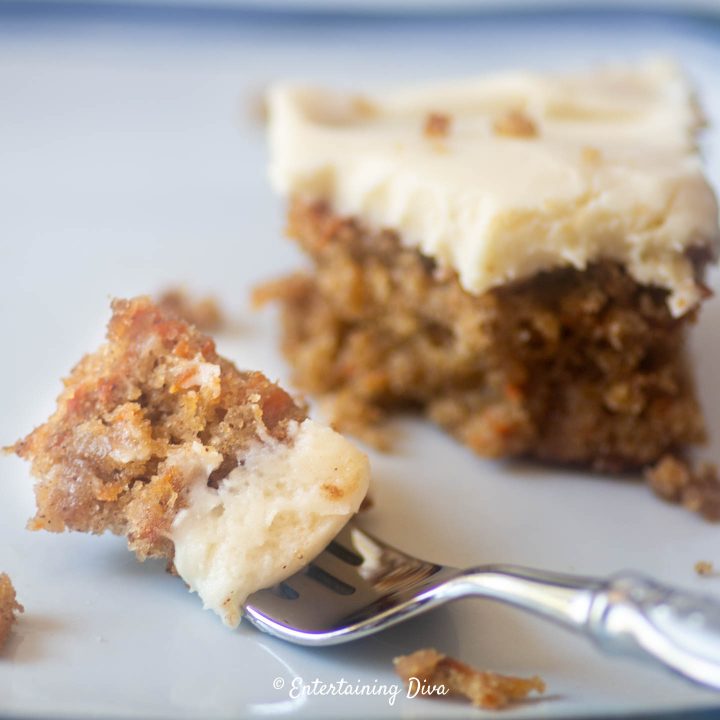
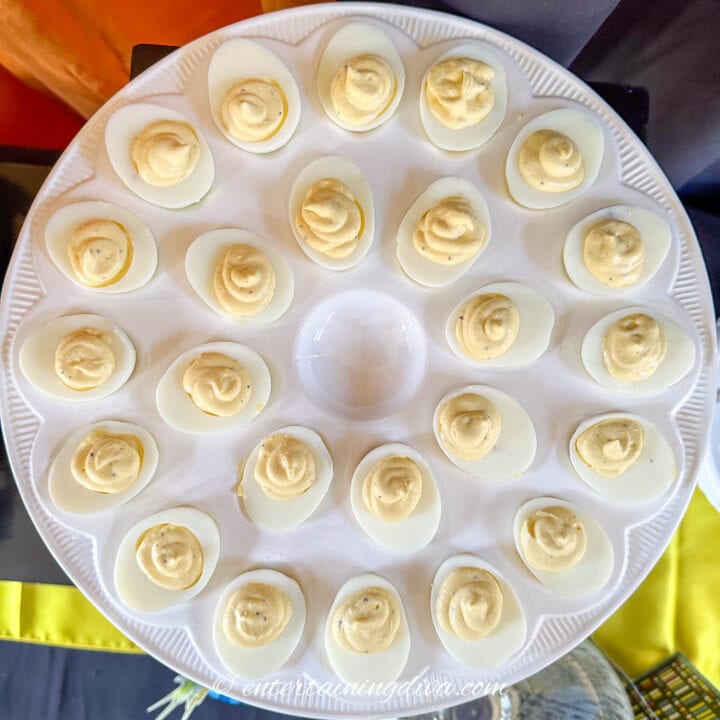
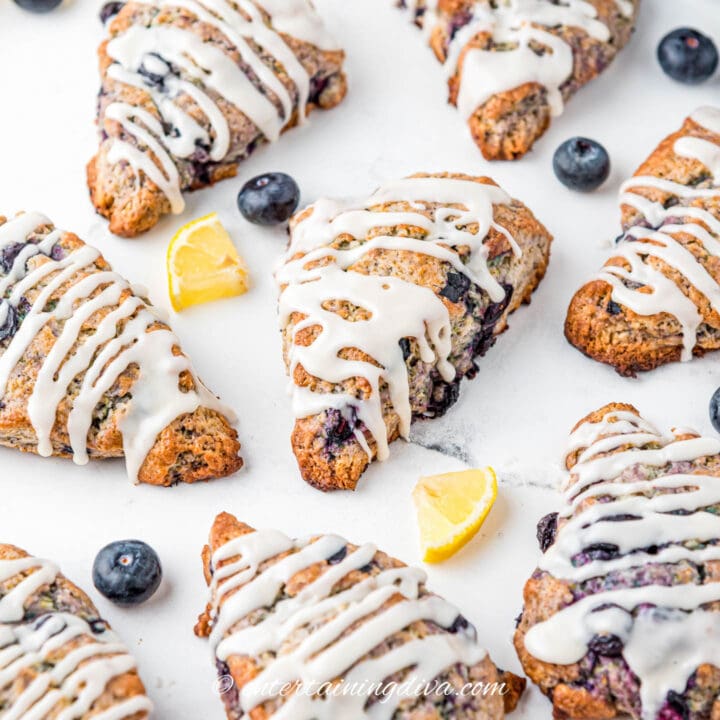
This is so beautiful but for an amateir lile myself I know it will not be easy…is there any easier way it can be done. .
Mari
Hi Mari…Making Easter eggs this way isn’t really as hard as it looks 🙂 If you’re happy with half Easter eggs, you can find an Easter egg jello mold which would be really easy to fill. I haven’t tried any other ways of making them but if you really want whole eggs, maybe you could use the plastic easter eggs that people put stuff in for Easter egg hunts? If you drill a hole in one end, you might be able to pour the jello in, let it cool in the refrigerator for a few hours, then take the plastic easter egg apart to get the jello out. If you try it, you’ll have to let me know if it works 🙂